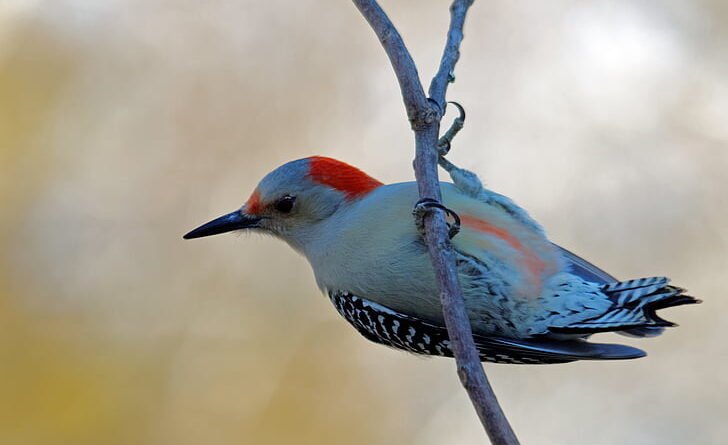Unveiling the Mysteries of the Blue Woodpecker
The Blue Woodpecker, scientifically known as Cyanopicus cyaneus, is a captivating avian species renowned for its stunning blue plumage and unique behavior. This elusive bird belongs to the woodpecker family (Picidae) and is native to Eastern Europe and parts of Asia.
B. Rarity and Distribution
Blue Woodpeckers are considered rare and elusive, with populations primarily concentrated in old-growth forests and wooded areas of Eastern Europe, including Russia, Ukraine, and Belarus. Their distribution is limited, and they are often difficult to observe due to their shy nature and remote habitat preferences.
C. Importance of Studying the Blue Woodpecker
Despite their rarity, studying Blue Woodpeckers is essential for understanding avian biodiversity, ecosystem dynamics, and the impacts of human activities on vulnerable species. Their unique adaptations and ecological roles make them valuable subjects for scientific research and conservation efforts.
II. Physical Characteristics

A. Striking Blue Plumage
The most striking feature of the Blue Woodpecker is undoubtedly its vibrant blue plumage, which covers the majority of its body. This intense blue coloration is a result of specialized pigments in the feathers and serves as a visual signal for mate attraction and territorial displays.
B. Unique Morphological Adaptations
In addition to their striking plumage, Blue Woodpeckers possess unique morphological adaptations suited for their arboreal lifestyle. These include a sturdy beak for drilling into tree bark to extract insects and specialized claws for gripping vertical surfaces while foraging and climbing.
C. Size and Proportions Blue Woodpeckers are medium-sized birds, typically measuring between 20 to 25 centimeters in length. They have a streamlined body shape and proportionate wings and tail, allowing for efficient maneuverability and navigation through dense forest habitats.
III. Habitat and Behavior
A. Preferred Habitat
Blue Woodpeckers inhabit mature forests with a diverse mix of tree species, including oak, beech, and pine. They prefer areas with ample deadwood for foraging and nesting and are often associated with undisturbed, old-growth forest ecosystems.
B. Foraging Behavior Blue Woodpeckers are primarily insectivorous, relying on a diet of insects, larvae, and grubs found beneath the bark of trees. They use their sturdy beaks to drill into tree trunks and branches, excavating insect galleries and probing for prey.
C. Territoriality and Communication
During the breeding season, male Blue Woodpeckers establish territories and engage in elaborate courtship displays to attract mates. These displays often include drumming on resonant surfaces, vocalizations, and visual cues such as wing flashing and head bobbing.
IV. Reproduction and Nesting
A. Breeding Season
The breeding season for Blue Woodpeckers typically occurs in the spring, coinciding with increased insect activity and the availability of nesting sites. Mating pairs engage in courtship rituals and nest-building activities to prepare for the arrival of offspring.
B. Nesting Sites
Blue Woodpeckers excavate their nesting cavities in dead or decaying trees, often selecting sites with suitable dimensions and structural integrity. The female lays a clutch of eggs within the cavity, which are then incubated by both parents.
C. Parental Care
Both male and female Blue Woodpeckers share parental duties, including incubating the eggs and caring for the hatchlings. They take turns feeding and protecting the chicks until they are ready to fledge and leave the nest.
V. Conservation Status and Threats

A. Conservation Status
The Blue Woodpecker is classified as a species of least concern by the International Union for Conservation of Nature (IUCN). However, habitat loss, deforestation, and fragmentation pose significant threats to its long-term survival.
B. Habitat Loss and Fragmentation
The conversion of old-growth forests into agricultural land, urban development, and logging activities are primary drivers of habitat loss and fragmentation for the Blue Woodpecker. Fragmentation reduces the availability of suitable nesting and foraging sites, impacting population viability.
C. Conservation Efforts
Conservation efforts aimed at preserving and restoring old-growth forest habitats are crucial for safeguarding the Blue Woodpecker and other forest-dependent species. Protected areas, habitat corridors, and sustainable forestry practices can help mitigate the impacts of habitat loss and fragmentation.
VI. Future Research Directions
A. Population Dynamics
Further research into the population dynamics and distribution of the Blue Woodpecker is needed to assess its conservation status and prioritize conservation efforts effectively.
B. Behavioral Ecology
Understanding the behavioral ecology of the Blue Woodpecker, including mating systems, foraging behavior, and nesting ecology, can provide valuable insights into its habitat requirements and ecological role.
C. Climate Change Resilience
Investigating the resilience of Blue Woodpecker populations to climate change and its associated impacts on forest ecosystems is essential for developing adaptive management strategies to ensure their long-term survival.
VII. Conclusion
In conclusion, the Blue Woodpecker is a remarkable and charismatic species with unique adaptations for life in old-growth forests. By studying their behavior, habitat requirements, and conservation needs, we can work towards ensuring their continued existence and preserving their place in the natural world for future generations to appreciate and admire. Through collaborative conservation efforts and continued research, we can protect the Blue Woodpecker and promote the conservation of its forest habitat for the benefit of biodiversity and ecosystems.

